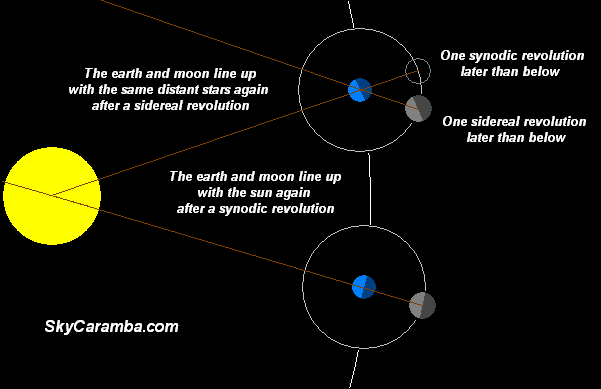¡SkyCaramba! Weekly astronomy blog for the week ending January 18, 2014
The moon will be at apogee on January 16. That’s the farthest it will be from the earth during its orbit. It will be full that day too. The two things won’t happen on the same date again until March 2015. In other words, all the full moons later this year and early next year will be closer to us than the one this month. Why aren’t they all the same distance?
The average time between full moons is a little more than 29 days, 12 hours. As the moon goes around the earth, it takes that long for the moon to line up in nearly the same way with the sun and earth. But going from apogee to apogee takes only about 27 days, 8 hours. So from month to month for the next 14 months, apogee will get earlier and earlier compared to the full moon until it’s an entire lunar month ahead and is actually happening with a full moon again.
This happens because while the moon goes around the earth, the earth goes around the sun. One lunar orbit takes about 27 days, 8 hours. During that time, the earth has moved. By the time the moon gets back to where it was at the start of its orbit, it’s at a different angle from the sun. It takes two more days to catch up to the lineup that makes it full.
The shorter period is called the sidereal period. It’s measured by how long it takes for an orbiting object to be against the same background of distant stars. The longer period is called the synodic period. It’s measured by how long it takes for an orbiting object to return to the same place compared to the sun.
It’s easy to observe the synodic period by just looking at the moon’s phase. You can count the days yourself between full moons, or first quarter moons, etc. It’s probably marked on a calendar in your home.
It’s almost just as easy to observe the moon’s sidereal phase. You just need to pay attention to which constellation the moon is in or close to at a given time. This month’s full moon is in Cancer between Gemini and Leo. February’s will be at the feet of Leo. March’s will be between Leo and Virgo.
Over the course of a month, you can also observe how far north or south the moon is. Make a note of when the moon is farthest north or south and count the days until it’s that far north or south again. It’ll take about 27 days. It should be obvious now, eventually there will be a full moon that is farthest north for the entire year and it will take about 14 months for the full moon to be that far north again.
This is a fun thing to observe. But there’s even more to the story. The moon’s distance is not tightly aligned with how far north or south of the equator it is. This month’s apogee is three days after northern lunistice (the moon’s position farthest north before it starts going south again). That’ll happen again in about ten years. This drift happens because of the gravitational tug between the earth and moon. I’ll go into that another time.
¡SkyCaramba!
